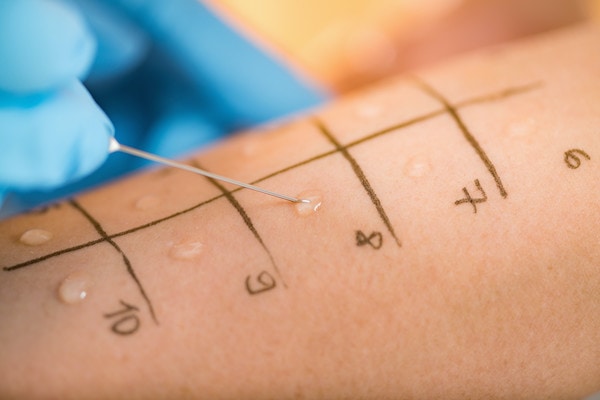USP Crustacean Protein Detection in Seafood
The United States Pharmacopeia (USP) [1] Chapter sets stringent standards for the detection of crustacean protein in seafood products. This service is designed to meet these regulatory requirements, ensuring that manufacturers and processors can confidently produce compliant food items. The primary aim of this testing method is to prevent cross-contamination from shellfish allergens which could pose significant health risks.
The procedure involves several key steps starting with the preparation of the sample. Samples must be carefully selected based on batch or production lot, and representative samples should range between 10-25 grams depending on the product type [2]. Once prepared, the samples need to undergo thorough extraction using appropriate solvents such as water or aqueous solutions of sodium hydroxide. This step ensures that all relevant proteins are released for detection.
The extracted solution is then subjected to immunoassay techniques which typically use monoclonal antibodies specific to crustacean antigens [3]. These antibodies bind selectively with the target protein, allowing for accurate quantification. The sensitivity of this method allows detection down to parts per million levels ensuring even trace amounts do not go undetected.
A critical aspect of this testing process is quality control measures implemented throughout each stage from sample collection through final reporting [4]. This includes stringent calibration procedures for instrumentation used in the assay, regular proficiency testing against known standards, and strict adherence to Good Laboratory Practices (GLP). Compliance with GLP ensures that all results are accurate, reliable, and repeatable.
The final step involves interpretation of the assay results which indicate whether or not the product contains unacceptable levels of crustacean protein. Results are compared against USP limits to determine compliance status. Non-compliance may necessitate corrective actions including recall procedures should there be potential for allergen exposure.
The importance of this testing cannot be overstated, especially given increasing awareness about food allergies and the need for safer products. By adhering strictly to USP , laboratories demonstrate their commitment to consumer safety while also fulfilling regulatory obligations.
Customer Impact and Satisfaction
For quality managers, compliance officers, R&D engineers, and procurement teams involved in seafood processing or manufacturing, ensuring adherence to USP is crucial. This service not only helps in maintaining product integrity but also enhances brand reputation by demonstrating a commitment to safety and regulatory compliance.
- Avoids costly recalls and legal issues related to allergen contamination
- Improves supply chain transparency and traceability ensuring all ingredients meet required standards
- Promotes innovation within R&D departments as they work towards developing safer products
- Strengthens relationships with distributors, retailers, and consumers who value high quality and safety
A satisfied customer base translates into increased market share and loyalty. Thus, investing in robust allergen testing services like this one pays dividends both financially and ethically.
International Acceptance and Recognition
The USP standard for crustacean protein detection has gained significant recognition internationally as a benchmark for seafood safety. Many countries have adopted similar standards or guidelines based on the principles outlined by the USP, reflecting its global relevance.
- European Union: The EU’s General Food Law Regulation (EC 178/2002) includes provisions that align closely with USP , emphasizing the importance of allergen control in food processing
- Canada: Health Canada recommends similar testing protocols to ensure seafood products are free from harmful contaminants
- New Zealand: Food Standards Australia New Zealand (FSANZ) guidelines also reference USP , endorsing its robust approach to allergen management in food production
The widespread adoption of such standards underscores the importance of this testing method not just within North America but across multiple continents. It serves as a global model for ensuring seafood safety and reducing risks associated with shellfish allergies.
Use Cases and Application Examples
| Application Example | Description |
|---|---|
| Seafood Processing Plants | Testing incoming raw materials to ensure they meet specification before processing, preventing contamination risks. |
| Distributors and Retailers | Verifying product compliance for shelf display and marketing purposes, enhancing consumer trust. |
| R&D Departments | Evaluating new formulations to ensure allergen-free production processes are implemented correctly. |
- Custom blends for pet food manufacturers ensuring no cross-contamination with crustacean proteins.
- Special dietary products where strict adherence to allergen-free requirements is paramount.
Incorporating USP into your quality assurance protocols enhances overall product safety and compliance, thereby protecting consumers from potential health risks associated with shellfish allergies.





